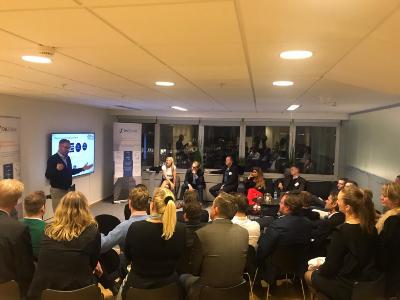 On 15 October 2019, I attended the 7th Stockholm FP&A Board, which was sponsored by OneStream Software and Michael Page. The topic of the evening was rolling forecast.
On 15 October 2019, I attended the 7th Stockholm FP&A Board, which was sponsored by OneStream Software and Michael Page. The topic of the evening was rolling forecast.
The event started with a short introduction and a poll on the experience of using rolling forecast. It turned out that less than 50% of FP&A Board members had some or a lot of experience in working with rolling forecast. The overall feedback was a mix of both really good and some bad experiences.
Basics of Rolling Forecast and Its Implementation
Rickard Olsson started with going through the main definitions, advantages and disadvantages. Forecast is often mixed up with a budget and you need to understand the differences. The main takeaway for me was that it is crucial to understand the difference between targets, forecast and resource allocation:
- Targets tell us where we want to be.
- Forecast shows our best guess of where we are.
- The resource allocation is what it takes to make it happen and is linked to both targets and forecast.
Forecasts vs Targets
The forecast should be unbiased and show the expected outcome. There is no need to have the forecast on a detailed level. A good estimate on a high level with limited details is enough. To support the forecast, you can use the actuals with very much details and the drill-down possibility to the individual transactions.
The target can be inspiring and stretching, while it is impossible to have any stretch in the forecast. It is even against the definition of the forecast since it should be unbiased and show what is expected to happen.
Why Do We Need Rolling Forecast?
Rolling forecast is a useful tool for supporting decision making since the world often turns out different from the way you expected it. Forecast should be a call to action. It can be a tool to get things on the radar screen early enough to be able to take corrective actions.
With Rolling forecast you can avoid forecast with some sort of miracle happening in the figures after some years, also called Hockey stick forecast. This is very easy to spot if you make a graph of the expected outcome in the forecast. The rolling forecast takes away this type of estimates since it is based on the latest actuals and with a realistic estimate of what is expected in the future.
According to Rickard, there are three levels of forecasts: operational forecasting, business forecasting and strategic planning.
- Operational forecasting has the purpose of execution and is a detailed forecast with the purpose to predict the future.
- Business forecast is focused on decision making, not too many details (more ranges) with the purpose of shaping the future.
- Strategic planning is aiming to create the future by creating options with broad brush estimates.

The benefits of using a rolling forecast are:
- better accuracy
- more flexibility
- quicker decision-making
- better link to strategy.
At the Board, we also discussed 7 factors for the successful implementation of rolling forecasts. You can read more about these factors here: https://www.fpa-trends.com/article/rolling-forecast-7-factors-success
The Board also looked at three types of forecasting techniques:
- Mathematical - based on hard facts like volume, material, price, usage etc put into a model like a cost model to get cost forecast.
- Statistical - where you use statistical methods and extrapolating
- Judgemental - forecast done by the ones with long experience within the business, based on their judgment
Presentation: Practical Experience on Rolling Forecast
James Watkins, Finance Director at Electronic Arts Europe, continued the event. He shared with us his experience of working with a rolling forecast for several years.
According to James, there are several advantages of a rolling forecast:
- Allows for strategic planning for products with a long lead time.
- Acts as a forcing function for cross-function co-operation
- Enables long term currency/tax planning
- Drives a smoother annual planning process
Nevertheless, it also has some disadvantages:
- Allows executives to focus decisions purely on numbers
- Sometimes disconnected
- Ineffective if data is incomplete or missing
- Time-consuming
According to James, it is not a good idea to base bonuses on forecasts. The bonuses should instead be based on the budget, where the forecast is only showing where we likely would end up.
James also told us that they had separated FP&A from Accounting in EA to clarify the different roles. This had worked out very well according to him.
Group Work: Different Aspects of Rolling Forecast

The evening continued with some group work on the success factors for implementing a rolling forecast.
Success factors from a human and a cultural aspect are:
- acceptance that the forecast will require enough time allocated
- respect for the forecast (i.e. do not put in black boxes)
- transparency - need to have the trust to put both good and bad outcome into the forecast
- management buy-in, they must support the process and the idea behind the forecast
- celebration of failures - do not only see failures as a mistake, instead treat it as a learning experience where you have gained new knowledge
Success factors from an analytical and systematical aspect:
- zooming out from accounting
- finding the right people, with FP&A skills
- thinking "events" rather than fixed time table
- not having too many numbers
- developing the right management mindset
- focusing on small instead of big data
- ensuring good communication
- paying attention to the user interface, Excel front end
- automating – e.g. feeding data with actuals
- ensuring data integrity, mastering data
- implementing a step by step approach
- using scenario management, what if's
- providing access to granular data




